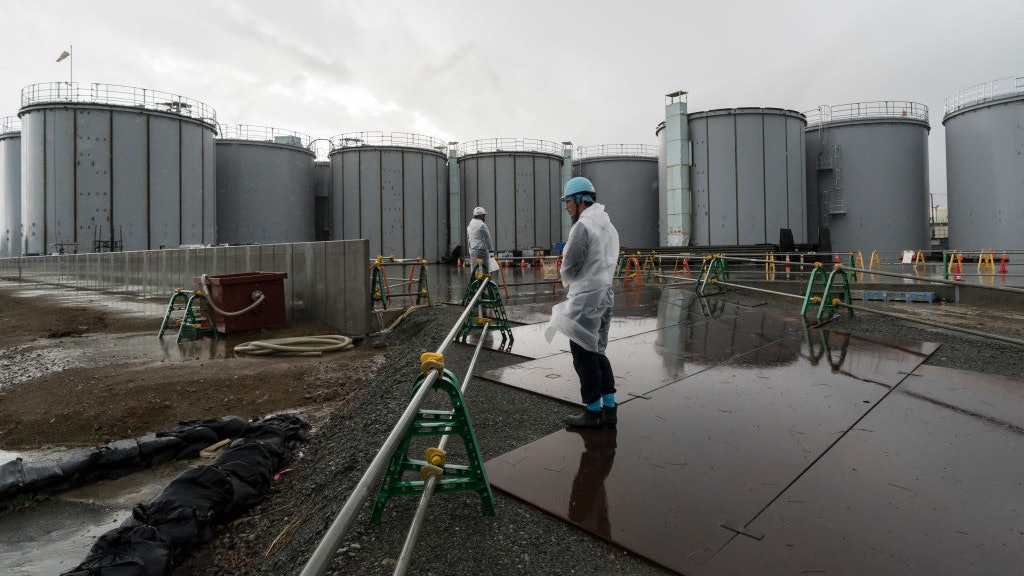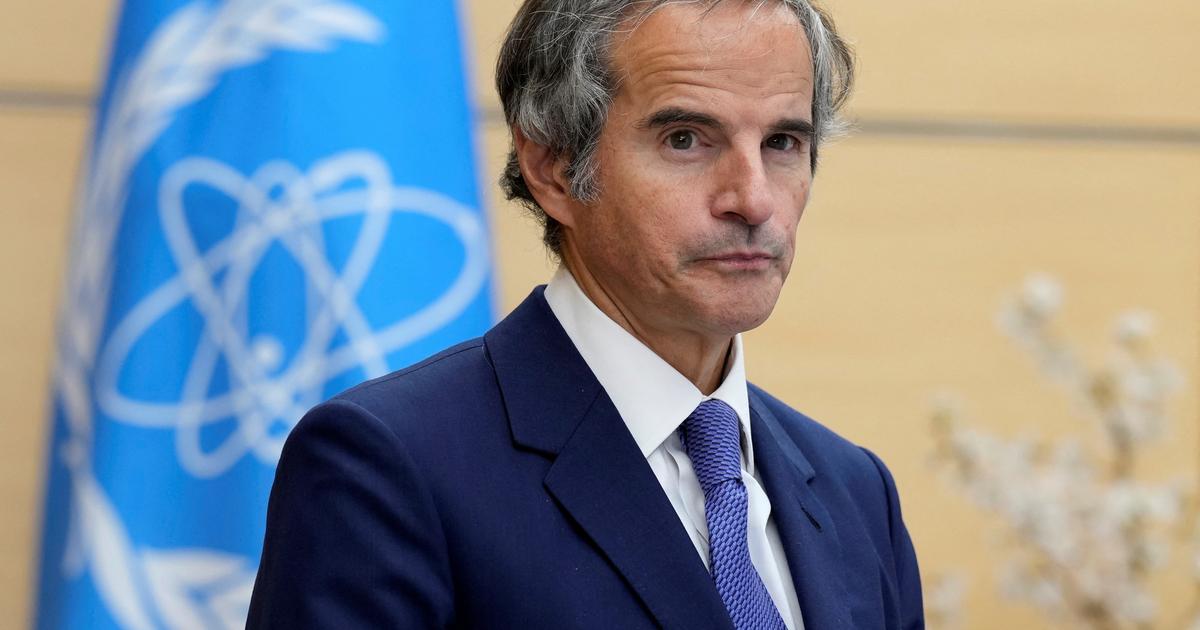In April last year, when the Japanese government officially decided to discharge more than one million tons of waste water from the Fukushima Daiichi nuclear power plant into the Pacific Ocean, a radioactive element called "tritium" (Tritium) caused widespread discussion.
The sewage produced after the accident should be discharged into the sea. This alone seems to be alarming, not to mention that there are nuclides that cannot be removed.
But does tritium pose a danger to the ocean and the human body?
In addition to tritium, can other radioactive substances contained in wastewater be discharged "indiscriminately"?
"Hong Kong 01" interviewed Geraldine Thomas, an expert in molecular pathology in the UK, and Ken Buesseler, an expert in marine chemistry in the United States, to answer these questions.
This article is the third of four reports in the series
Tokyo Electric Power Company (hereinafter referred to as TEPCO) pointed out that after purification by the "multi-nuclear species removal equipment" (ALPS), almost all 64 nuclides in the sewage generated by the Fukushima Daiichi nuclear power plant were removed, leaving only carbon 14 and tritium (粤Sound: Chuan), while the concentration of the former is only one-thousandth of the Japanese emission standard.
However, since tritium is an isotope of hydrogen, which is equivalent to a part of water, it is difficult to separate from it. These sewage that cannot be completely purified have been stored in 1061 water storage tanks within the scope of the nuclear power plant for many years.
After the nuclear power plant was hit by an earthquake and tsunami in 2011, three of the six reactors suffered core meltdowns. After more than ten years, the cooling water continuously added to prevent the nuclear fuel from overheating, as well as the groundwater and rainwater flowing under the reactors formed multiple disasters. Up to 1.32 million tons of sewage.
The water storage facility with an on-site storage space of 1.37 million tons is about to reach its capacity limit. Tepco said that sewage disposal (discharge) can no longer be postponed.
However, the issue of excessive tritium concentrations remains unresolved.
After the announcement of the sea discharge plan, the discussion about "tritium water" was incessantly noisy.
In order to educate the public about the health effects of tritium, Japan's National Revival Agency released a "tritium" mascot on its website in the same month, but removed the relevant content a day later due to public bombardment.
01 Diagram: Fukushima nuclear sewage source and treatment process
Is tritium dangerous?
When Geraldine Thomas, emeritus professor of molecular pathology at Imperial College London and longtime researcher of the Chernobyl disaster, talks about the element, her first reaction is: "People shouldn't be afraid of tritium. .”
Tritium is a kind of mildly radioactive hydrogen, also known as "super heavy hydrogen", which is widely used in the manufacture of medical biological imaging agents, luminous materials for escape exits, etc. Similar to other radioactive elements, the radioactivity of tritium may have an impact on the human body ——High doses of internal radiation can cause cancer, while low doses can cause symptoms such as fatigue, lethargy, loss of appetite, and nausea.
But Thomas said that there are many factors that affect the actual effects of radiation on a person: "First of all, you have to be exposed to radiation; then you have to look at its physical properties, which is the length of the half-life the time it takes to reduce to half the original); then there is the amount of radioactive energy it emits."
01 Exclusive│Radiation water is here?
TEPCO explained Fukushima's sea discharge plan in detail next year (Part 1)
British molecular pathologist Geraldine Thomas has been involved in assessing the health effects of Chernobyl and Fukushima nuclear disasters for many years, and is an authoritative scholar in this field.
(provided by respondents)
Thomas explained that the beta rays emitted by tritium are the weakest kind, "like waving a feather", and cannot even pass through human skin, and only affect people when they are ingested.
Even if it enters the human body in the form of water, the half-life of tritium is only about 10 days.
Imagine if you downed a pint of water and you're going to the bathroom in no time.
Tritium takes about the same amount of time to pass through your body.
Geraldine Thomas, Professor of Pathology
TEPCO promises to dilute the treated water containing tritium by 100 times or more, so that the maximum concentration will not exceed 1500 Bq/L, which is equivalent to the drinking water standard (10,000 Bq/L) set by the World Health Organization. One-seventh, TEPCO will also set the annual tritium discharge amount to control the tritium discharge amount.
In Australia, the upper limit of tritium concentration in drinking water is 76,000 becq per liter, while in Russia it is limited to 7000 becq per liter; the EU and US standards are stricter, at 100 bec per liter and 740 bec per liter respectively.
Thomas pointed out that assuming that the concentration of tritium in seawater is consistent with the upper limit set by the World Health Organization (WHO), people can only get 0.1 millisieverts (mSV) of radiation if they insist on drinking 2 liters of water per day for up to one year , which is equivalent to the amount of natural radiation that ordinary people receive in two weeks: "It is hard to imagine that any normal person would drink so much seawater. It is estimated that this person was already sick before drinking so much water."
The total amount of sewage stored in the Fukushima Daiichi nuclear power plant is still about 1.32 million tons, enough to fill 500 Olympic-sized swimming pools.
(Map drawn by Hong Kong 01)
Fukushima Sewage Discharge︱Filtration system "one man guards the gate": Is the sea discharge plan really safe? (Part 2)
Enter the human body with seafood?
Tritium, as part of a water molecule, basically moves with ocean currents when discharged into the ocean, says Ken Buesseler, a marine radiochemist at the Woods Hole Oceanographic Institution in the US: Hong Kong because the currents won't bring it to Hong Kong."
However, Buesseler believes that 63 nuclides other than tritium in sewage need attention.
In an article published in the journal "Science" in 2018, Buesseler pointed out that the radiation dose coefficient of tritium is actually the lowest among the 64 nuclides, which means that the radiation hazard is less at the same dose, and the upper limit of tritium emissions is therefore relatively higher.
"Tritium is less of a concern than cesium, strontium or iodine, which explains why tritium has higher emission limits than other isotopes."
At the same time, other nuclides are more likely than tritium to deposit on the sea floor and even accumulate in fish.
For example, the bioconcentration factor of carbon-14 in fish is 50,000 times higher than that of tritium, and the two nuclides, cobalt-60 and ruthenium-106, are 300,000 and 400,000 times more likely to accumulate on seabed sediments than tritium, respectively. .
American marine radiochemist Ken Buesseler has personally visited Fukushima many times in the past 10 years, going to sea to collect samples.
"If it's sea bottom sediment, that means it stays in mainland Japan, doesn't move across the Pacific, but accumulates over time. We've seen from the 2011 Fukushima Daiichi accident that isotopes like cesium It's high in some demersal fish that may be exposed to sediment, bind cesium, and live on the seafloor, as do other organisms like shellfish -- if you release these directly into the ocean, you'll have higher levels locally levels and accumulate over time," Buesseler said.
However, when asked whether these radioactive materials would pose a real threat to humans if they passed through the food chain, Buesseler said:
We don't know this.
What we do know is that these elements are more likely to enter the seafood, but how high the content is depends entirely on the discharge plan, how much is discharged every day, and how clean the sewage is.
But at least you need to monitor those nuclides (other than tritium) carefully.
Marine radiochemist Ken Buesseler
According to the emission plan and radiation impact assessment submitted by TEPCO, the radiation dose of 64 radioactive elements to the human body is only 30,000 to 3,000th of the upper limit of the public radiation dose (1 mSv per year), which is based on the International Atomic Energy Agency. The radiation assessment method takes into account the possibility of people being exposed to internal or external radiation such as swimming in the sea, drinking seawater, and eating seafood. According to the per capita seafood intake in Japan and the high intake population (about 100% higher than the average 3 times) intake results.
Thomas points out that all of these computational models take worst-case scenarios into account.
Currently, TEPCO has set the radioactive dose constraint value (i.e., the upper limit of discharge) for discharged wastewater at 0.05 millisieverts per year-"this will have no impact on you."
She explained that anyone flying from Tokyo to London in ten hours would receive 0.07 millisieverts of radiation, which is higher than the highest level of radiation that these wastewater can bring to a person in a year: "Because such a low dose It just doesn't make sense to be concerned about (radiation)."
She also explained that some radioactive elements have extremely long physical half-life (physical half-life), such as iodine-129 with a half-life of 16 million years, but the time these isotopes stay in the human body is biological half-life (biological half-life), Therefore, the physical half-life is much longer than the biological half-life.
"When you drink or eat something, it (the isotope) gets out of your body and doesn't stay in the body forever."
As for isotopes that people worry about, such as americium and strontium, they will accumulate in bones, but people generally don't eat fish bones, and the chance of being exposed to trace amounts of isotopes is very slight, "so there is no need to worry at all."
01 Interview|43 countries lifted the ban on Fukushima food: Sake exports did not decrease but increased rice to a new high
exaggerated fear
After the Chernobyl nuclear power plant accident in 1986, Thomas led the establishment of the Chernobyl Tissue Bank (Chernobyl Tissue Bank) to track the health effects of the nuclear disaster for a long time, and also conducted field research for many years after the Fukushima nuclear disaster.
She has witnessed years of ingrained fear of nuclear radiation and its ripple effects: "For decades, we have been taught to be afraid of radiation because of the nuclear arms race."
She said that whether it was the Chernobyl accident or the Fukushima nuclear disaster, the number of people who were finally affected by radiation and suffered from cancer and died was much smaller than people imagined. "The irony is that our fear of radiation is actually more harmful to health than the radiation itself," said the report released by Ernoble Nuclear Disaster.
Although the daily increase in the amount of sewage in Fukushima has been greatly reduced, the total amount of sewage has reached about 1.32 million tons over the years, and the number of giant water storage tanks within the nuclear power plant has also reached more than 1,000.
(Getty)
Regarding the impact of Fukushima wastewater, Thomas believes that people's fears are "scientifically unfounded," but understandable: "The irony is that our fear of radiation is actually more harmful to health than radiation itself." As A long-time observer of the Chernobyl nuclear disaster, Thomas said he supported the development of nuclear energy because he knew better, because the safety risks were manageable.
Note: The UNSCEAR 2018 white paper acknowledges that thyroid cancer is a major health problem caused by accidents, but only in those who were children or adolescents at the time of the accident.
Previous fears of rising rates of leukemia did not materialize, nor did any fertility problems, but its psychological effects - such as high anxiety - and general ill health did.
Previous studies have shown that there were no global consequences of accidents in Asia and North America, a fact that has not changed to date
In an interview with Agence France-Presse, Jia Feilunming, a radiation risk assessment expert at Oita University in Japan, also said that it is important to control the dilution concentration and discharge of nuclear wastewater. "Scientists generally agree that (nuclear wastewater discharge) has an impact on health. It is very small, but the risk of discharging nuclear wastewater cannot be said to be zero, and this is where the controversy lies.”
The International Atomic Energy Agency (IAEA), which has tracked the Fukushima drainage plan, also supports the discharge.
Agency Director-General Rafael Mariano Grossi said that discharging into the sea is a "realistic option" that is easy to operate, "technically achievable, and also in line with international practice." Monitoring support.
On March 10, 2021, in Namie Town, Fukushima Prefecture, Japan, a market worker carries fish at the local wholesale market that has been rebuilt.
(Getty Images)
Unable to get rid of stigma
Even if these nuclides are purified to a negligible level of radiation to humans, it seems that the sea discharge operation will inevitably arouse people's instinctive vigilance.
Buesseler, who has been to the waters off Fukushima many times to conduct research, also criticized that the details and data released by the International Atomic Energy Agency (IAEA), which is in charge of third-party supervision, are not detailed enough. It is difficult for the outside world to judge the real impact of the sea discharge plan. He is very disappointed.
He also cited as an example that the element strontium-90 has attracted attention in Japan because it is easy to deposit in human body or fish bones: "At present, we cannot say (after being discharged into the sea) that it will exist in fish bones, but Why are you taking the risk?"
As the Fukushima nuclear waste water officially enters the sea next spring, one thing seems to be certain, the revival of the local fishery will be hit hard again. During this interview, the reporter also felt the stigmatization of nuclear pollution by officials from various Japanese departments Anxiety and anxiety.
Apart from ordinary Japanese people, fishermen in Fukushima and other places are believed to be the most vocal group against the emission plan.
In fact, after 11 years, the fishery in Fukushima has also slowly recovered. Although the authorities have invested a lot of resources to revitalize the local fishery, including the establishment of fish fry farms and aquatic product monitoring systems, it has been difficult to show signs of recovery in recent years. With the launch of the sea project, the stigma issue may once again plague Japan, and even the fisheries of neighboring countries or regions. The Japanese side may need a long-term and transparent review of external explanations and disclosure of the monitoring details of the sea discharge project to relieve public doubts.
01 Exclusive│Radiation water is here?
TEPCO explains Fukushima's sea discharge plan next year in detail (Part 1) Fukushima sewage discharge︱Filtration system "one man guards the gate": Is the sea discharge plan really safe? (Part 2) Fukushima sewage discharge|IAEA revisited Japan to verify nuclear wastewater discharge plan Japan Fukushima nuclear wastewater|Chen Keqin is worried about the impact on local fishery Deng Jiabiao proposes to ban Japanese fishery production to prevent sewage discharge after the Fukushima nuclear accident tragedy Why is Japan still re-entering the embrace of nuclear energy?
|Behind the news












